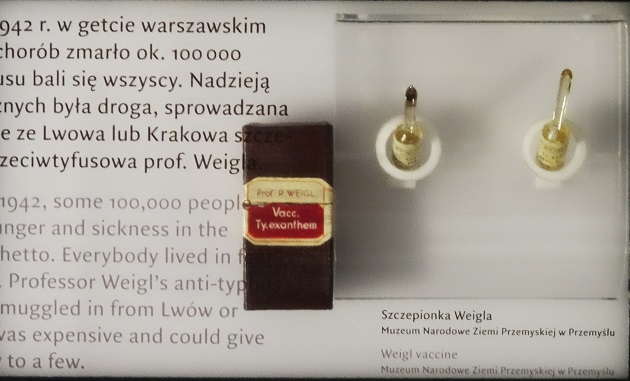Google has honoured the Polish Biologist Rudolf Stefan Weigl on his 138th birth anniversary with a doodle today, that is on September 2, 2021.
He is better known for his discovery of the first ever effective vaccine against epidemic typhus which is one of the oldest and most infectious diseases of its time.
Get to know all about Rudolf Weigl, his inventions and contributions in the article below.
Rudolf Weigl: Google Doodle explained
The Google doodle has shown the Polish inventor holding his test tube in gloved hands with lice in the background and a human body poster as well. There are round bottomed and conical flasks in front of him in the shape of Google's logo. Take a look at it below

All about Rudolf Weigl:
- Rudolf Stefan Jan Weigl was born on September 2, 1883. He was a Polish biologist, a physician and an inventor.
- His birth took place in the Austro-Hungarian town of Przerow. It is in the modern day Czech Republic.
- He studied biology in Poland's Lwow University and it was in 1914, when he was appointed as a parasitologist in the Polish Army.
- His knowledge of biology came in handy when millions were dying of plague by typhus in Eastern Europe and he discovered the cure.
Research by Rudolf Weigl: Vaccine Development
Rudolf discovered that the body lice are carrying the typhus infecting bacteria called Rickettsia prowazekii. So he adapted a tiny insect into a lab specimen.
Then he conducted research on how to use lice to propagate deadly bacteria which he had been studying for almost 10 years. He had hoped to develop a vaccine for the same and he succeeded in 1936.
It was in that year, Rudolf discovered the vaccine successfully and inoculated its very first beneficiary.
Take a look at the picture from the Polish museum with his first vaccine.

World War II Contributions:
During the outbreak of World War 2, Weigl was forced to open a vaccine production plant. He used this facility to hire his friends and colleagues and protected them from persecution as well.
Due to his vaccine an approximately 5000 people were saved. He made direct efforts to protect his neighbours and also distributed thousands of vaccine doses nationwide.
Rudolf Weigl: Awards
He was also honoured with two Nobel Prize nominations to support his work.
Weigl was nominated once for his invention of typhus vaccine in 1942. However, he did not sign the Reichslist, which infuriated the Germans to withhold his nomination that year.
In 1946, he was again the forerunner of the Nobel until the Polish Government withdrew his nomination. That year he was falsely accused of collaborating with the Germans.
In 2003, years after his death, he was honoured as Righteous among the Nations of the World. Israel gave this honour to him. This year even Google wished him with a Doodle on his 138th anniversary.
.jpg)
Weigl breathed his last at the age of 73, on August 11, 1957. He was in the Polish Mountain Resort of Zakopane then.
Comments
All Comments (0)
Join the conversation